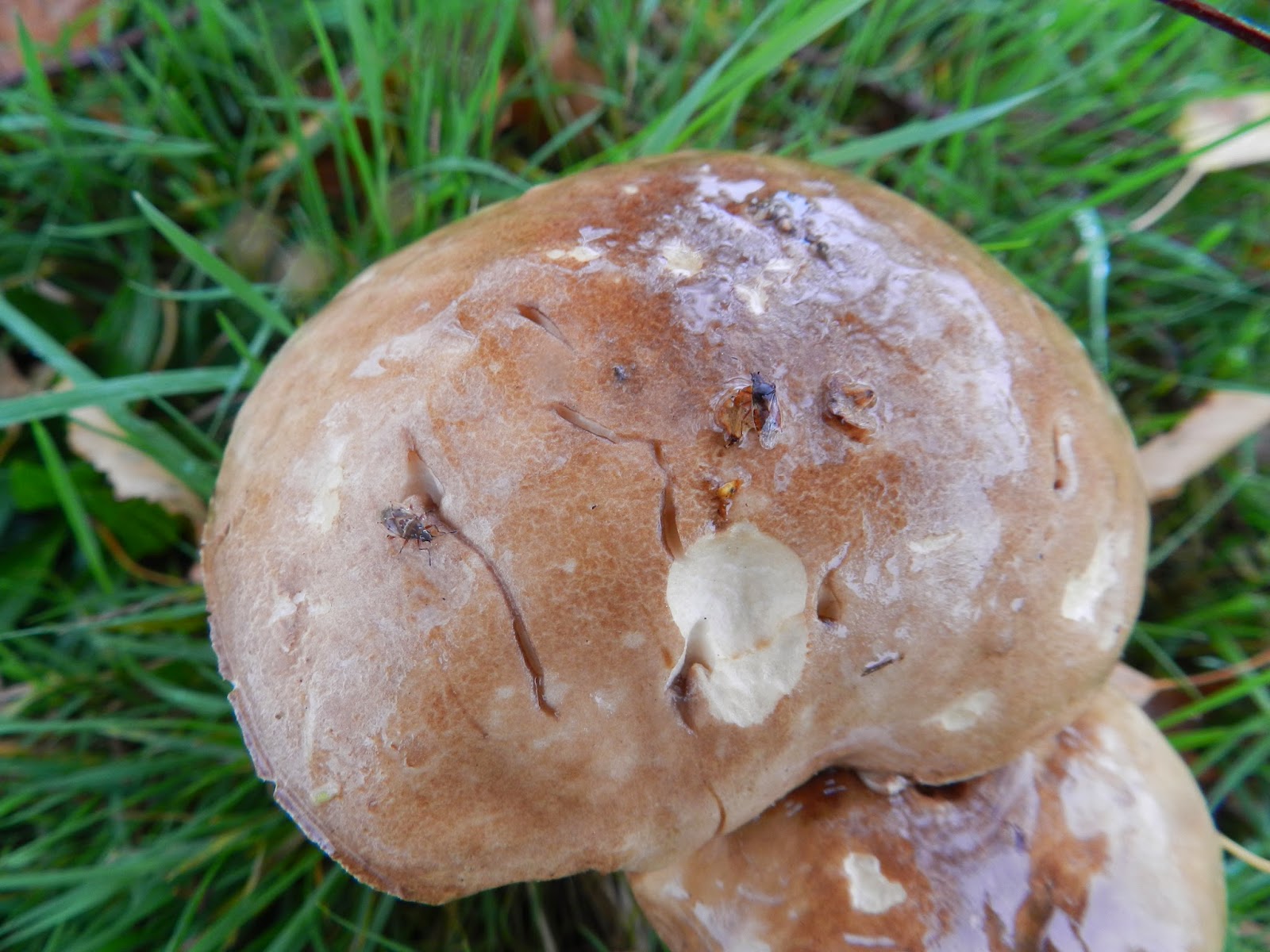Fungi at Kingston Cemetery
An outstanding year with a large number of species (see below). We found at least two species, which are indicative of unimproved grassland.
.JPG)

 On the left is a Brown Roll Rim, which can take up lead from the air. people used to eat them but the ill effects arise a few days after eating. A White Inocybe on the right is common on waysides. Below is a snowy wax cap, the gill aid identification, assisted by the mirror (without picking) .
On the left is a Brown Roll Rim, which can take up lead from the air. people used to eat them but the ill effects arise a few days after eating. A White Inocybe on the right is common on waysides. Below is a snowy wax cap, the gill aid identification, assisted by the mirror (without picking) .
At the Dawson Road entrance was the remains of a copper beech. The tree was infected by Giant Polypore (Meripilus giganteus) seen at the right hand of the stump in its advanced stages, this is a form of butt rot fungus common on Beech. Due to its location, action was taken in the interest of public health and safety. It will be replaced with Black Tupelo (Nyssa sylvatica). Beautiful range peel fungus arises from the remaining stump.
Under a very old birch are three species of bolete, the Brown Birch Bolete is shown here and on the right is shown with two flies laying their eggs. In November the flies arising from the eggs will be important for birds and any bat species. Both red and yellow cracked boletes are around the tree. They have pores instead of the usual gills.
Comments
Post a Comment
Please share your thoughts